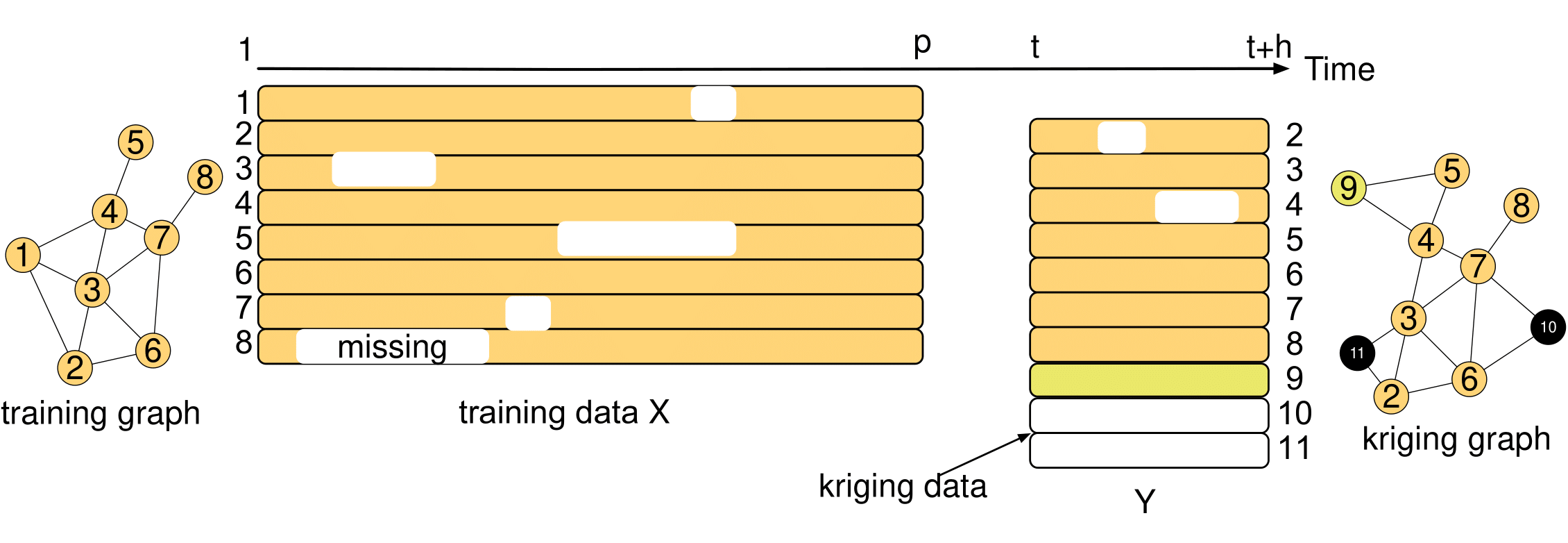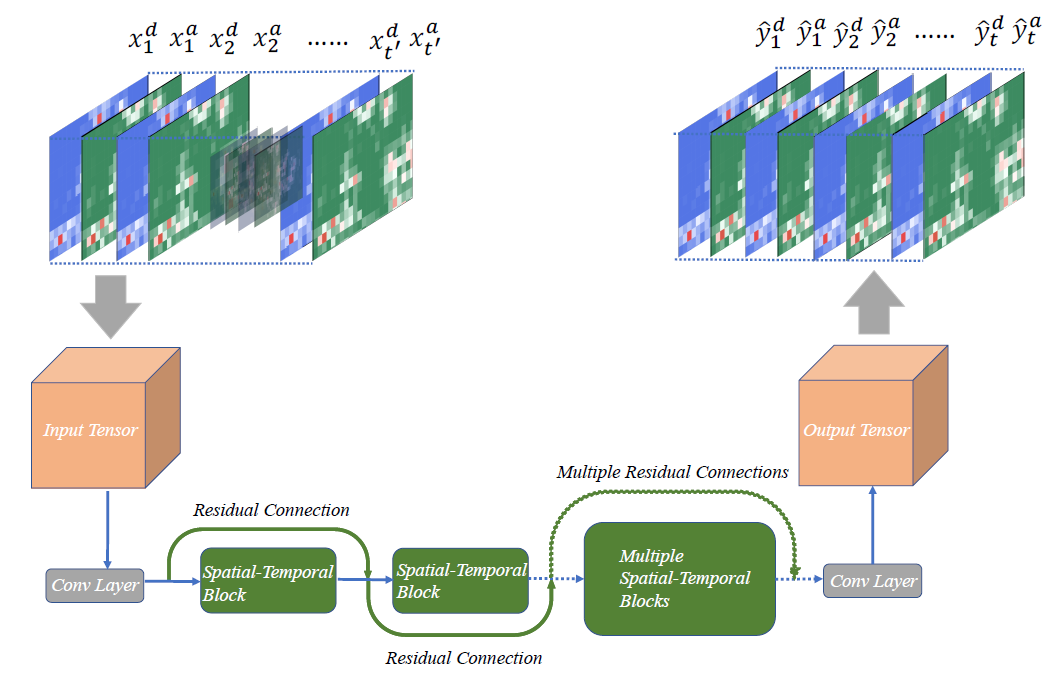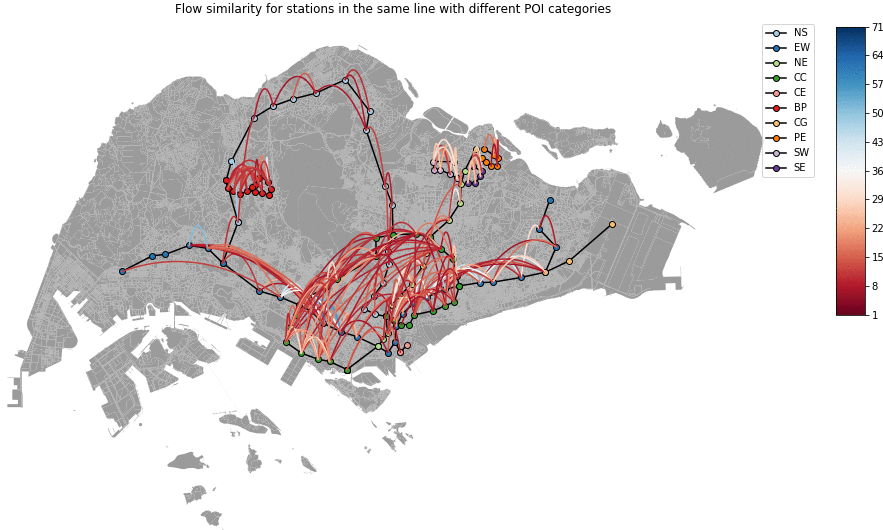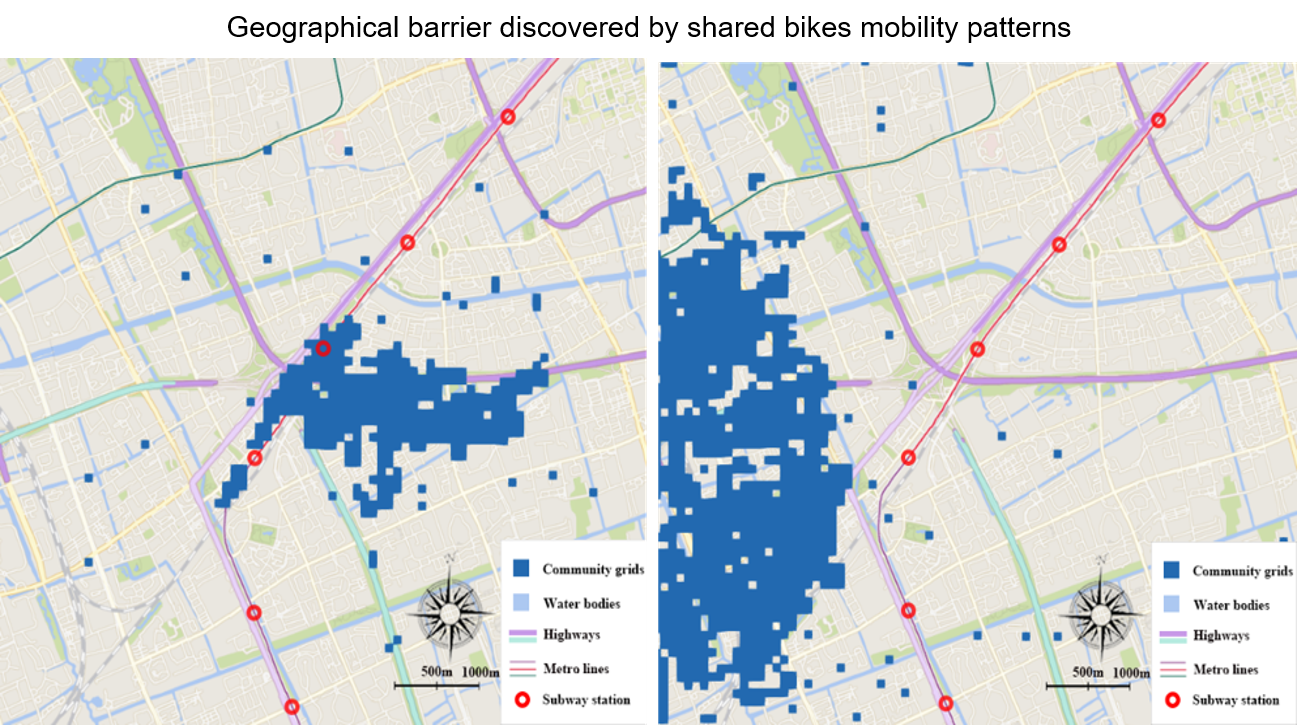Research Projects
- Neural Spatiotemporal Point Process for City-Scale Traffic Accident Modeling
- Modeling Paratransit Demand with Hankel-structured Poisson Tensor Factorization
- Inductive Graph Neural Networks for Spatiotemporal Kriging
- Reinforcement Learning-based Traffic Signal Control in Special Scenarios
- A General Framework Based on Temporally Dynamic Adjacency Matrix for Long-Term Traffic Prediction
- Bayesian Poisson Tensor Factorization for Learning Paratransit Mobility Patterns
- A Spatial-temporal Deep Learning Framework for Network-wide Bus Passenger Flow Prediction
- A Pseudo-3D Convolutional Neural Network based Framework for Short-term Mixed Passenger Flow Prediction in Large-scale Public Transit
- Understanding semantic similarity among subway stations using smart card data
- Understanding the bike sharing travel demand and cycle lane network: the case of Shanghai
Neural Spatiotemporal Point Process for City-Scale Traffic Accident Modeling
McGill University, Sep. 2020 ~ Nov. 2020
Advisor: Prof. Lijun Sun
Co-worker: Yuankai Wu
- Defined the conditional probability functions of accident timing and location as nonlinear functions of the history, whose representation could be effectively learned by sequence-to-sequence networks.
- Formulated the conditional probabilities of future accident timing and location as log-normal mixture models with parameters conditioned on the historical representation.
- Experiments on real-world datasets from three cities confirmed NSTPP’s capacity to outperform deep learning and conventional point process in accident prediction

Modeling Paratransit Demand with Hankel-structured Poisson Tensor Factorization
McGill University, May. 2020 ~ Aug. 2020
Advisor: Prof. Lijun Sun
- Derived and implemented Hankel-based Poisson Tensor Factorization to learn latent seasonal spectrum of paratransit service for the disabled people in the region-level. PDF
- Enhanced interpretability traditional probabilistic factorization model, and conducted cases studies on both temporal and spatial latent modes to discover behaviors from sparse and dispersed paratransit data.
Inductive Graph Neural Networks for Spatiotemporal Kriging
McGill University, Apr. 2020 ~ Jun. 2020
Advisor: Prof. Lijun Sun
Co-worker: Yuankai Wu
- Developed a dynamic sampling based inductive framework of graph neural network to recover data for unsampled sensors on a network/graph structure. arXiv code
- Learned the spatial message passing mechanism by generating random subgraph samples and adjacency, then reconstructing signals on them.
- Implemented and outperformed advanced spatial kriging and matrix completion models on various spatiotemporal datasets to test the inductive ability.
- Paper in the proceeding of AAAI 2021.

Reinforcement Learning-based Traffic Signal Control in Special Scenarios
McGill University, Mar. 2020 ~ May 2020
Advisor: Prof. Lijun Sun, Doina Precup
Co-worker: Zhenyuan Ma
- Point out that reinforcement learning traffic signal control should not only focus on regular intersection, but also special scenarios like high-way offramps. video code PDF
- Both Reinforcement learning efficiency and saftey issues will greatly influenced by scenario changing like simply adding an offramp, which leaves concerns for using reinforcement learning signal control.

A General Framework Based on Temporally Dynamic Adjacency Matrix for Long-Term Traffic Prediction
McGill University, Dec. 2019 ~ Feb. 2020
Advisor: Prof. Lijun Sun
Co-worker: Fuqiang Liu, Jiawei Wang, Jingbo Tian and Prof. Luis Miranda-Moreno
- Introduced a general framework with Bias Block to improve the performance of seq2seq extreme long-time prediction.
- Used STGCN, DCRNN and GWNet as base model and chose Matrix Factorization, VAR and SVR as the baseline to prove that our model obtain higher accuracy and stronger interpretability.
- Geodata visualization with Python and paper writing.

Bayesian Poisson Tensor Factorization for Learning Paratransit Mobility Patterns
McGill University, Oct. 2019 ~ Dec. 2019
Advisor: Prof. Lijun Sun
- Derived and implemented Bayesian Poisson Tensor Factorization to learn latent patterns of paratransit service for the disabled people in the region-level. PDF
- Discovered multiple peak-time, indifference between weekdays&weekends as temporal patterns and discuss the spatial regularity.
- Offered a trial on a marginal research field and appealed for more researches of the disabled and how their transit can be improved.
A Spatial-temporal Deep Learning Framework for Network-wide Bus Passenger Flow Prediction
National University of Singapore, Apr. 2019~ Aug. 2019
Advisors: Prof. Lee Der-Horng and Prof. Jiangang Jin
Co-worker: Dr. Siyu Hao
- Proposed an end-to-end deep learning framework (spatial-temporal block) that aims at making multi-step collective prediction for different types of bus passenger flow (boarding and alighting) in a network-wide region level. PDF
- Captured simultaneously both long-range spatial dependencies and the correlations with channel dimension and predicted the boarding demand and alighting demand at each region in the near future.

A Pseudo-3D Convolutional Neural Network based Framework for Short-term Mixed Passenger Flow Prediction in Large-scale Public Transit
National University of Singapore, Apr. 2019~ Aug. 2019
Advisors: Prof. Lee Der-Horng and Prof. Jiangang Jin
Co-worker: Dr. Siyu Hao and De Zhao
- Proposed a Pseudo-3D Convolutional Neural Network (Pseudo-3DCNN) based model to predict the public transport passenger flow in a network-wide region level. PDF
- Took metro passenger flow, bus passenger flow as well as the transfer flow between metro system and bus system together into consideration instead of merely predicting a single type of passenger flow.
- The feasibility and effectiveness of our proposed model has been demonstrated on real-world data collected in Singapore.
- Paper presented in TRB 2020.

Understanding semantic similarity among subway stations using smart card data
National University of Singapore, July. 2018~ Sept. 2018
Advisors: Prof. Lee Der-Horng and Prof. Jiangang Jin
Co-worker: Dr. Siyu Hao
- Proposed a new conception to understand metropolitan mobility as words
- Independently selected mobility features then trained stacked autoencoder network to discover mobility semantics
- Applied topic modeling (TF-IDF+SVD+LDA) on scraped POI data to find service semantics
- Paper published in Transportation Research Part C: Emerging Technology doi

Understanding the bike sharing travel demand and cycle lane network: the case of Shanghai
Shanghai Jiao Tong University, Mar. 2017~ June. 2018
Advisor: Prof. Jiangang Jin
- Proposed methods to scrape data from bike-sharing application
- Applied graphic clustering to mine the insight of bike-sharing data
- Suggested a method to explore cycle lane network then presented advice for urban planning
- Paper accepted published in International Journal of Sustainable Transportation doi .

